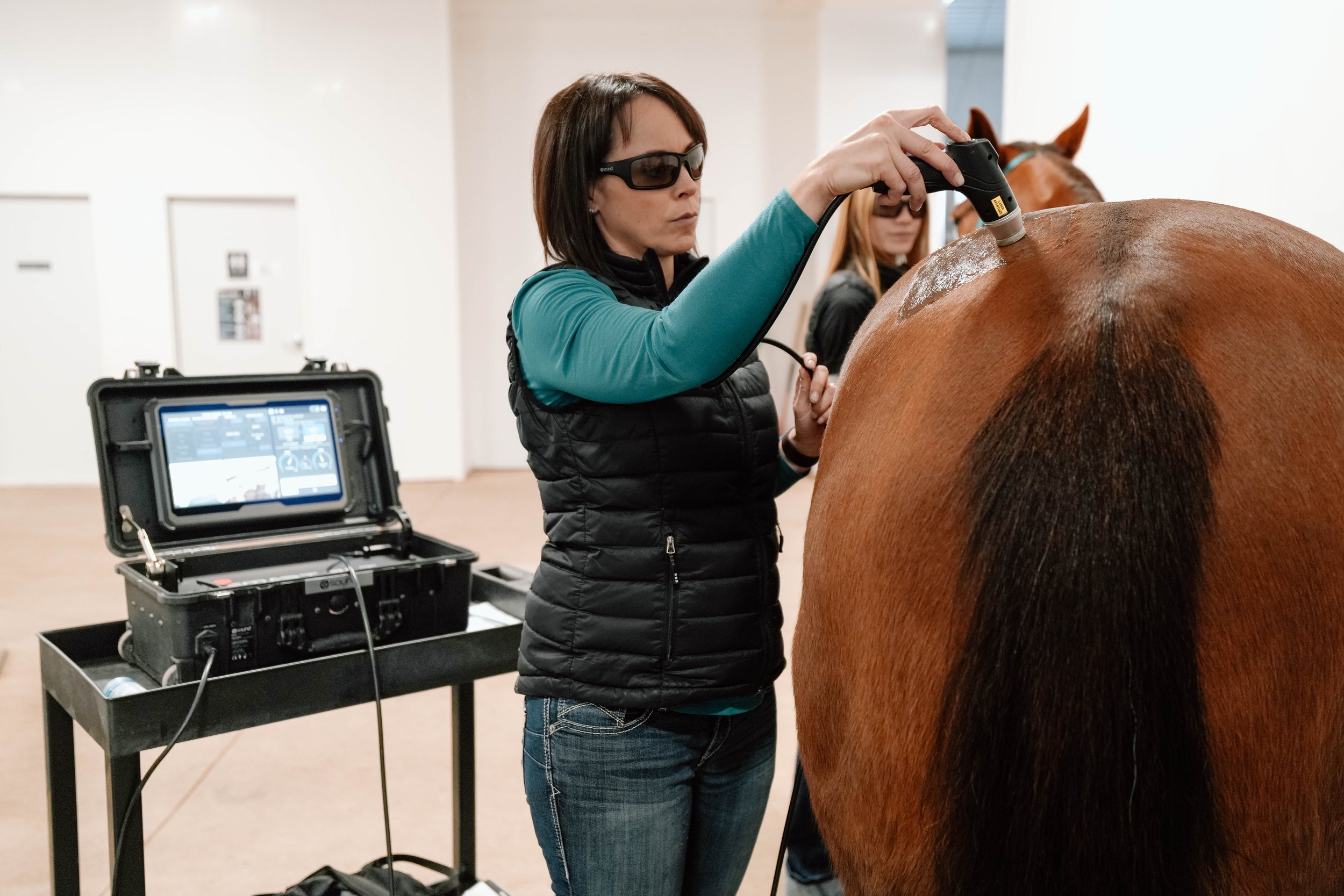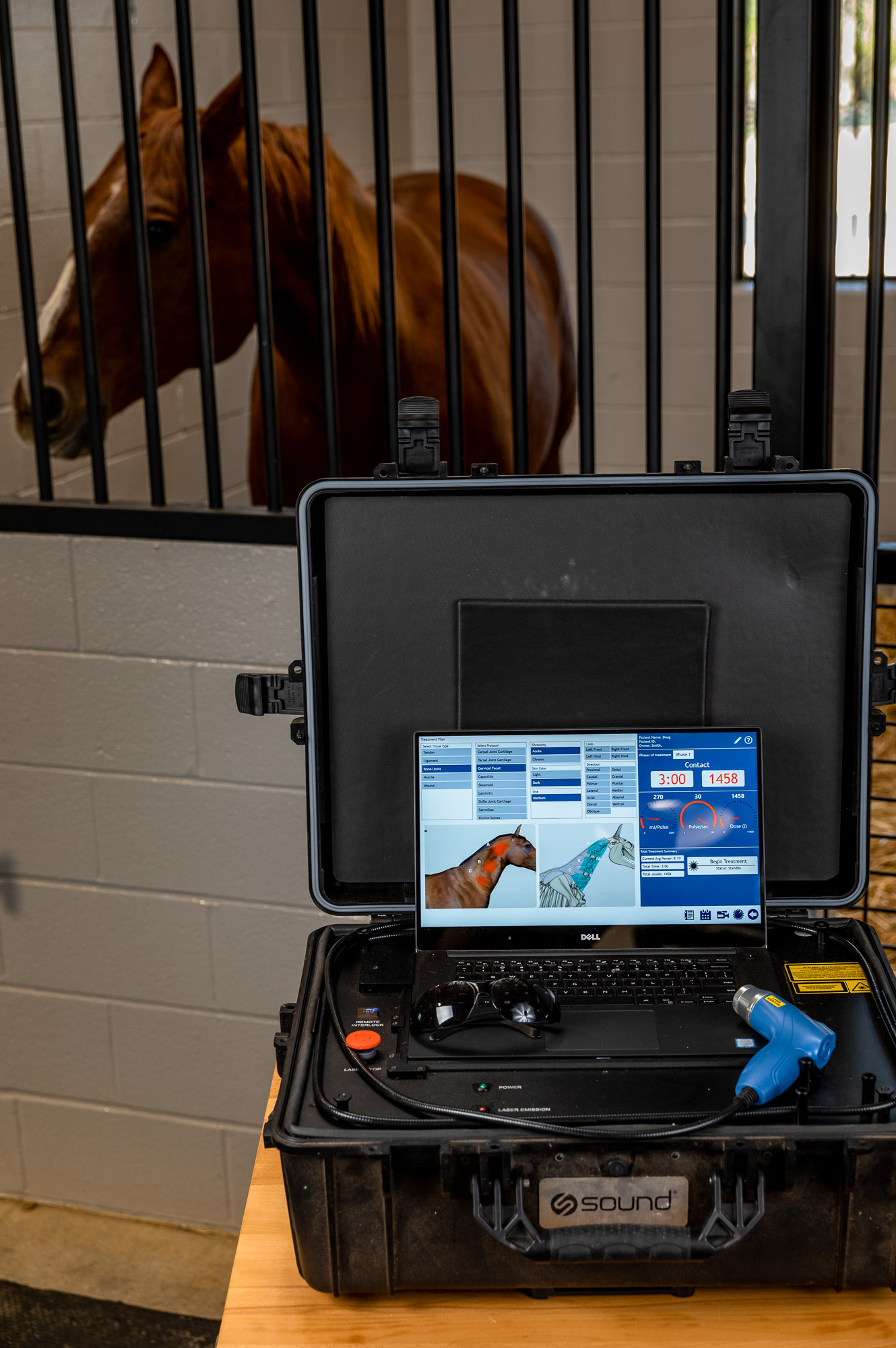Equine Therapy for Kid: Psychological and Behavior Support Discussed
Equine Therapy for Kid: Psychological and Behavior Support Discussed
Blog Article
Just How Laser Therapy in Horse Therapy Is Transforming Vet Take Care Of Steeds
Laser therapy has become a transformative method in equine vet care, supplying a non-invasive solution that accelerates healing and improves total health and wellness. Leveraging precise light wavelengths, this innovative therapy promotes mobile regeneration, lowers swelling, and reduces discomfort. Its efficiency extends from bone and joint injuries to persistent ailments like osteo arthritis, considerably boosting movement and life high quality for horses. The mobility and flexibility of laser treatment tools additionally emphasize their growing indispensability among vets. As we check out the detailed technicians and real-world successes, the extensive effect on equine medical practices ends up being progressively obvious.

Understanding Laser Therapy
Comprehending laser therapy is essential for appreciating its role in equine therapy. Laser treatment, additionally called photobiomodulation, includes the application of certain wavelengths of light to tissues, which can result in various biological results. This therapeutic method uses the power of light power to penetrate the skin and underlying cells, boosting cellular processes and boosting tissue repair.
The modern technology behind laser treatment is grounded in the concept of photochemistry, where photons are absorbed by chromophores within cells, bring about enhanced ATP production and inflection of reactive oxygen varieties. This, consequently, advertises cellular proliferation, minimizes inflammation, and increases healing. Vet professionals utilize various types of lasers, consisting of low-level lasers (LLLT) and high-power Class IV lasers, relying on the particular healing goals and the nature of the equine condition being dealt with.
Different laser wavelengths and power setups are thoroughly picked to target different tissue midsts and accomplish preferred clinical end results. Security protocols are paramount, as inappropriate usage can result in thermal damages or suboptimal restorative results. Therefore, an extensive understanding of laser therapy's systems and applications is essential for its effective application in equine vet method.
Advantages for Horse Health
The myriad benefits of laser treatment for equine wellness encompass enhanced healing, discomfort decrease, and boosted mobility. This sophisticated therapy method leverages details wavelengths of light to penetrate tissues, promoting cellular feature and advertising quick cells repair. The non-invasive nature of laser therapy guarantees very little stress and anxiety and pain for the horse, helping with a smoother recuperation procedure.

By reducing swelling and pain, and improving tissue repair service, laser treatment helps in recovering joint function and muscular tissue adaptability. Thus, laser therapy stands as a transformative tool in contemporary horse veterinary treatment.
Common Problems Dealt With
Laser therapy has actually arised as a functional treatment option for a range of typical equine problems. In addition, laser therapy is effective for conditions like osteo arthritis, where it aids minimize joint inflammation and promote tissue repair service.
Wound management is another location where laser treatment has shown considerable guarantee. Chronic wounds or slow-healing ulcers can be particularly difficult in equines, however laser therapy enhances cellular regeneration and improves blood circulation, hence expediting the healing process. Laser treatments have been successfully employed in managing hoof problems such as laminitis and abscesses, relieving discomfort and advertising quicker recovery.
Equine athletes usually endure from performance-related problems like muscle mass soreness and stress cracks. Laser therapy help in lowering muscle exhaustion and speeds up the recovery of micro-injuries, therefore ensuring that steeds go back to come to a head performance quicker. By dealing with these varied conditions, laser therapy is changing the landscape of veterinary treatment, offering a non-invasive, reliable choice to conventional therapies.
Innovation Behind Laser Therapy

Laser tools made use of in veterinary medication often make use of low-level laser therapy (LLLT) or cold laser therapy. Unlike high-powered medical lasers, these devices operate at reduced energy levels, maximizing therapeutic advantages while minimizing thermal damages. The energy from the laser light boosts adenosine triphosphate (ATP) manufacturing, enhances mobile metabolic process, and increases tissue repair processes.
Modern laser treatment tools for equine therapy is developed with click to find out more adjustable settings to provide to the certain requirements of different tissues and problems. In addition, innovations in laser technology have led to the development of portable, portable gadgets, making it easier for vets to supply therapy in a selection of setups, from facilities to stables.
Success Stories and Instance Researches
Showcasing the concrete benefits of laser treatment, many success stories and case researches illuminate its transformative influence on equine wellness. One such situation involves a purebred racehorse suffering from persistent tendonitis. Conventional treatments produced very little renovation, however after integrating laser treatment into the regimen, the steed displayed significant decreases in inflammation and pain within weeks, inevitably returning to affordable racing.
An additional compelling instance features a dressage equine detected with extreme neck and back pain, limiting its efficiency. A vet team utilized low-level laser look these up treatment (LLLT) to target the swollen areas, resulting in marked renovation in flexibility and a significant decline in discomfort. Over several sessions, the equine reclaimed its peak form, showcasing the efficacy of laser therapy in resolving musculoskeletal issues.
Furthermore, a research study conducted at a leading equine center examined 50 equines with different soft cells injuries treated with laser therapy. The results were striking: 85% of the equines showed sped up recovery times and improved flexibility. These instances emphasize the Recommended Site versatility and effectiveness of laser treatment in equine medication, supplying a non-invasive, scientifically-backed strategy to boosting recuperation and efficiency in equines.
Final Thought
Laser therapy is transforming equine veterinary care by providing a non-invasive therapy that increases recovery, minimizes inflammation, and eases discomfort. With its efficiency in treating a variety of problems, from bone and joint injuries to persistent conditions like osteoarthritis, this modern technology dramatically boosts equine health and wellness and movement. The portability and flexibility of laser treatment additionally highlight its transformative influence on vet methods, solidifying its role as a necessary tool in modern equine medical care.
Report this page